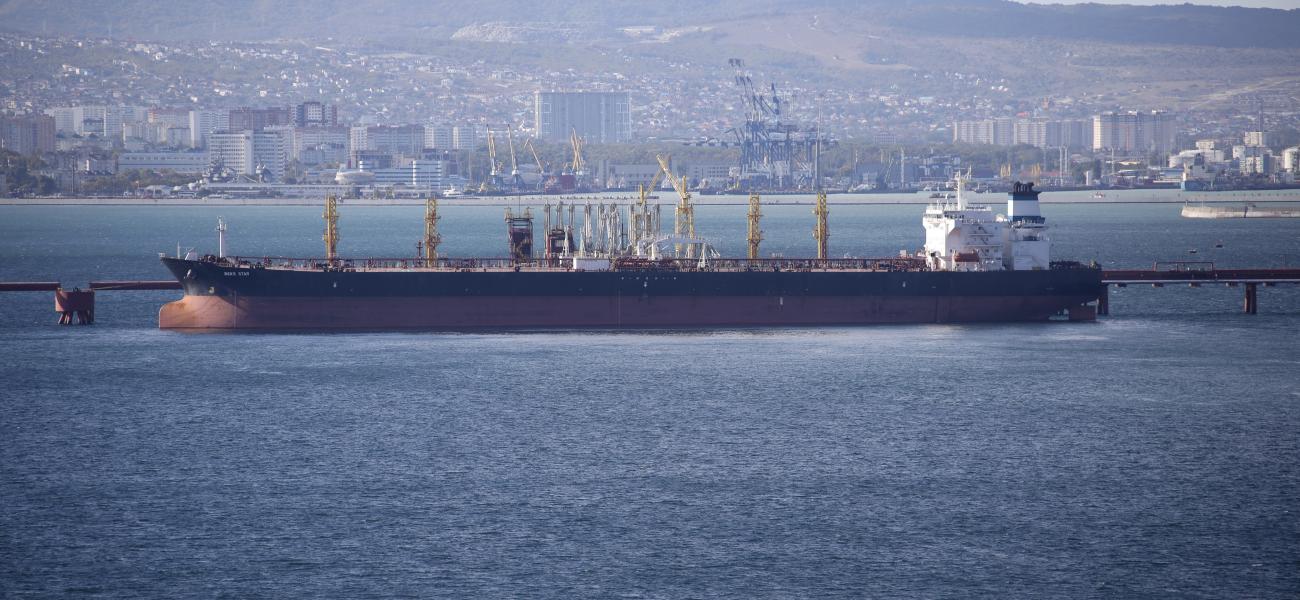How Western curbs on Russian oil revenue benefit China
Russia’s decisive turn toward China—politically, economically and technologically—has been among the most notable geopolitical consequences of President Vladimir Putin’s decision to invade Ukraine. Yet Moscow and Beijing had been edging closer for over a decade before the invasion and, regardless of their relationship with one another, American officials have seen each as a major national security and foreign policy challenge for some time. From this perspective, the best policies to address each challenge must avoid making the other more difficult to manage. U.S. efforts to damage Russia economically demonstrate that Washington has yet to internalize this strategic logic. Continued failure to do so will likely have escalating costs.
Western policymakers have focused on the price cap’s economic damage to Russia. Yet from another perspective, the oil price cap is taking oil profits from Russia and handing the money to the countries still willing to buy its crude, especially China and India, the latter of which accounted for about 40% of Russia’s oil and fuel exports in 2023.
We estimated China’s savings by comparing the price of Russian crude to oil from a basket of OPEC nations (Saudi Arabia, Iraq, the United Arab Emirates, Oman, Angola and Kuwait). This basket of nations accounts for nearly half of Chinese oil imports, and prices for oil from these countries and Russian oil tracked each other closely before the war. Drawing on information from China’s General Administration of Customs about the quantity of oil imported and the dollar value of that oil, we divided the latter by the former to calculate the price of oil from different countries, giving us a sense of the discount that Russian oil was sold at relative to prices from China’s other suppliers. Multiplying the discount by the quantity of Russian oil imported each month creates a rough estimate of total Chinese savings. Between March 2022 and June 2024, those savings amounted to nearly $16 billion. Because this figure only accounts for oil shipments that were officially registered, the actual savings could be greater. In either case, this is a sizable boon to China’s economy at a time of slowing growth.
Nor is China the only country to benefit from the price cap. From a near-zero starting point, Russia has become India’s largest oil supplier. Based on calculations from Indian analysts, India likely saved between $10.5–13 billion between 2022-2024 by importing Russian oil. With India also a major exporter of refined oil products, cheap Russian crude has helped India make money on both ends.
The price cap reflects an effort to reconcile the U.S. and Western desires to reduce Russia’s oil revenue, on one hand, with the reality that Russia’s oil supplies are essential to the stability of the global economy, on the other. Yet the global oil market is a closed system; when combined with Western oil import bans, reductions in Russia’s oil price must yield a discount for someone other than Western consumers.
Considering that China consumed about 15% of the world’s crude oil in 2021—and a larger share of the remaining global market after bans or deep cuts in U.S. and European Union imports from Russia—it is hardly surprising that China would be among the principal beneficiaries of a price cap policy. And it should have been predictable, especially in view of Beijing’s combination of high demand and high import dependence with its unusual willingness and capability to defy Washington.
This is not a call to eliminate the price cap or, for that matter, for lifting the oil import bans. Either step would look like an admission of defeat at this time. It is, however, an urgent call for policymakers to adapt to the reality that the United States is competing simultaneously with China and Russia. Perhaps a $16 billion windfall to China is an acceptable price to pay for denying the funds to Moscow. But U.S. officials and members of Congress should weigh decisions like this in advance rather than discovering them afterward. To date, there is scant evidence that policymakers in the administration or on Capitol Hill assessed this possibility. Moreover, had they done so, widespread concern about Beijing’s capabilities and aspirations would almost surely have prompted leaks from such deliberations during a two-and-a-half-year war.
The United States faces daunting national security and economic challenges in today’s rapidly evolving international system. Many—such as the changing nature of warfare and the growing roles of autonomous systems, military and otherwise, across our societies—will remain difficult to assess in advance. In view of this growing uncertainty, U.S. officials would benefit from efforts to anticipate the “knowable” consequences of their policy options (or at least justify the outcomes—in this case a large economic windfall for China—in terms of national interests). Failing to do so further multiplies not only the world’s uncertainties, but also its dangers.
Paul Saunders is president of the Center for the National Interest and a senior advisor at Energy Innovation Reform Project. He was a State Department political appointee from 2003 to 2005.
